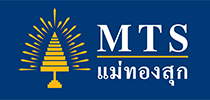



The dollar index, which measures the greenback against six major currencies, has slipped around 3 percent since mid-August.
The index was basically flat at 94.134 on Wednesday, sitting near a 2-1/2 month low of 93.814 touched on Friday.
The dollar changed hands at 112.95 Japanese yen, close to a near 10-week high of 113.02 yen touched earlier in the session.
The euro, meanwhile, was flat at $1.1767.
• The Fed is expected to raise interest rates by a quarter point Wednesday and indicate it plans to keep hiking them in what many expect to be a hawkish message for markets.
Wall Street economists expect the Fed to make a number of changes that reinforces a hawkish tone, including raising its growth forecasts, dropping language that says its policy is accommodative and sounding more confident about the outlook.
.png)
“Another quarter of 4 percent real GDP growth coupled with faster wage gains will likely cause policymakers to err on the side of aggressiveness at some point ... Investors may soon have to contend with the fact that the Fed is going to press harder to dampen ebullient economic activity.”
• Investment bank Goldman Sachs predicts the Fed will raise rates four times in 2019, faster than the three hikes suggested by policymakers in their projections in June or the two to three increases foreseen by investors.
• In its last round of economic projections in June, the Fed forecast the economy would grow 2.8 percent this year, a figure several central bank officials have since publicly notched higher.
The unemployment rate, currently 3.9 percent, is at a level considered beyond what can be sustained without putting upward pressure on wages and inflation, and consumer confidence is strong, having hit an 18-year high in September.
• French voters growing restless to see the fruits of President Emmanuel Macron’s reform drive will need to wait at least another year for the full impact, Finance Minister Bruno Le Maire said.
Macron’s pro-business government rushed through an overhaul of the labor market and tax cuts for the wealthy and companies in his first year in office, leaving many voters feeling left behind.
• The Asian Development Bank (ADB) said on Wednesday it had lowered its 2018 economic growth forecast for Vietnam to 6.9 percent from 7.1 percent projected previously, partly due to an ongoing trade friction between the United States and China.
Developing Asia could grow more slowly than previously thought next year as the U.S.-China trade war inflicts damage on the region’s export-reliant economies, the Asian Development Bank (ADB) said on Wednesday.
The Manila-based institution kept its 2018 economic growth estimate for the region at 6.0 percent in an update of its Asian Development Outlook. But it trimmed next year’s forecast to 5.8 percent from 5.9 percent.
“Downside risks to the outlook are intensifying”, said ADB Chief Economist Yasuyuki Sawada, pointing to the potential impact of U.S-Sino trade tensions on regional supply chains and the risk of sudden capital outflows if the Federal Reserve raises interest rates even more quickly.
• China’s economy is expected to grow 6.3 percent in 2019, the ADB said, slower than its 6.4 percent forecast in July and weaker than its 6.6 percent growth estimate for 2018, which was unchanged from its previous projection.
• French voters growing restless to see the fruits of President Emmanuel Macron’s reform drive will need to wait at least another year for the full impact, Finance Minister Bruno Le Maire said.
Macron’s pro-business government rushed through an overhaul of the labor market and tax cuts for the wealthy and companies in his first year in office, leaving many voters feeling left behind.
• The European Union has more pressing priorities than Britain’s future relationship with the bloc, starting with its own future, French Finance Minister Bruno Le Maire said.
He said the priority was to strengthen the euro zone, notably by completing plans for a backstop for its bank resolution fund and creating a shared budget, so that it could cope with a new financial or economic crisis.
• China and the United States can compete but should not view each other with a Cold War mentality and should avoid falling into a zero-sum game trap, the Chinese government’s top diplomat said, amid deteriorating ties between the superpowers.
• Japan and the United States have reached a broad understanding over how to promote bilateral trade and may announce specifics on Wednesday, Economy Minister Toshimitsu Motegi was quoted as saying after meeting U.S. Trade Representative Robert Lighthizer.
Motegi said he hoped to give more details after a scheduled summit of the two countries’ leaders on Wednesday in New York, Kyodo News reported.
• Brent crude was trading around its highest in nearly four years on Wednesday, while U.S. crude futures fell as Washington tried to assure consumers that the market would be well supplied before sanctions are re-imposed on producer Iran.
Brent crude futures were up 10 cents, or 0.1 percent, at $81.87 a barrel by 0645 GMT, after gaining nearly 1 percent the previous session. Brent rose on Tuesday to its highest since November 2014 at $82.55 per barrel.
U.S. crude futures were down 4 cents at $72.24 a barrel. They climbed 0.3 percent on Tuesday to close at their highest level since July 11.
• Crude Oil WTI Technical Analysis: Capped at 73.00 can rotate down to $70.00 a barrel
Crude oil bulls want to keep extending the main trend but they need to surpass 73.00 a barrel.
Oil might be encountering resistance as the market is trading at levels not seen since July 2018.
Failure to break above 73.00 can lead to a rotation down towards $70.00 a barrel.
Main Trend: Bullish
Resistance 1: 72.00 figure
Resistance 2: 73.00 figure
Resistance 3: 75.00 figure
Support 1: 71.41-63 zone, Sept.4 high-July 13 high
Support 2: 70.53 May 24 low
Support 2: 70.53 May 24 low
Reference: Reuters, CNBC,FXStreet
